

THE TEMPERATURE INSIDE THE ROOM ON HOT SUNNY DAYS IS AFFECTED GREATLY BY THE TYPE OF BLINDS USED

8 times more effective
than internal blinds
Awning blinds - 8 times more effective protection against heat gain compared with internal blinds





8 times more effective
than internal blinds
Awning blinds - 8 times more effective protection against heat gain compared with internal blinds

Most of us look forward to hot, sunny days, but while the sun is delightful on the beach, it can be a real nuisance in the home or workplace. Solar radiation streaming into a room causes a significant rise in temperature, not only in the attic but throughout the building. The most effective protection comes from external awning blinds and shutters, which are especially valuable on south- or west-facing roofs.
Vertical awning blinds provide the most effective protection against high temperatures. By blocking UV radiation before it reaches the glass, they prevent warm air from entering the room.
We design, plan and manufacture with care for the environment. Offering environmentally friendly and energy-efficient products has been encoded in the company’s DNA. We ensure that every process, every action and every decision we make is always accompanied by concern for the comfort and healthy life of future generations. All of these activities is encapsulated in the important GO GREEN philosophy.
Awning blinds are the optimal solution for protecting against excessive solar heat. They absorb solar radiation before it reaches the glazing and release the heat externally, providing far superior protection from uncomfortable indoor temperatures on sunny days. Offering up to eight times the effectiveness of internal blinds, they can reduce indoor temperatures by as much as 10°C.
Awning blinds help reduce the energy consumption of air conditioning units, lowering operating costs and cutting CO2 emissions. The solar-powered model requires no electricity, as it is driven by a photovoltaic cell. In addition, it protects against heat loss during colder weather by improving the heat transfer coefficient by up to 16%, further contributing to lower heating bills.
Windows fitted with awning blinds, rather than external roller shutters, allow natural light to flow freely into the interior. The blinds let in sufficient daylight to eliminate the need for additional artificial lighting.
When lowered, the awning blind maintains visual contact with the outside environment. It allows you to enjoy the view while still preserving privacy from anyone looking in.
When unrolled, the awning blind improves the working environment by maintaining consistent light levels and ensuring visual comfort. It reduces glare that can interfere with laptop use or television viewing, while also protecting the eyes from strain by providing evenly distributed light
Awning blinds limit the penetration of harmful UV radiation into the room. When lowered, they protect furnishings from fading or yellowing caused by prolonged exposure to UV rays.
In addition to reducing heat gain, electric awning blinds (Z-Wave, Solar WiFi) and the VMZ ZIP version also function as insect screens. When the window is open, a lowered awning blind prevents unwanted insects from entering.
With the optional VMX installation set, awning blinds can be installed by a single person, saving both time and costs. Using the VMX set, customers can carry out DIY installation of manual awnings across the full size range, while electric, solar, and VMZ ZIP models can be installed up to approximately 1.5 m × 1.5 m.


WHY DO WE USE VERTICAL AWNING BLINDS?
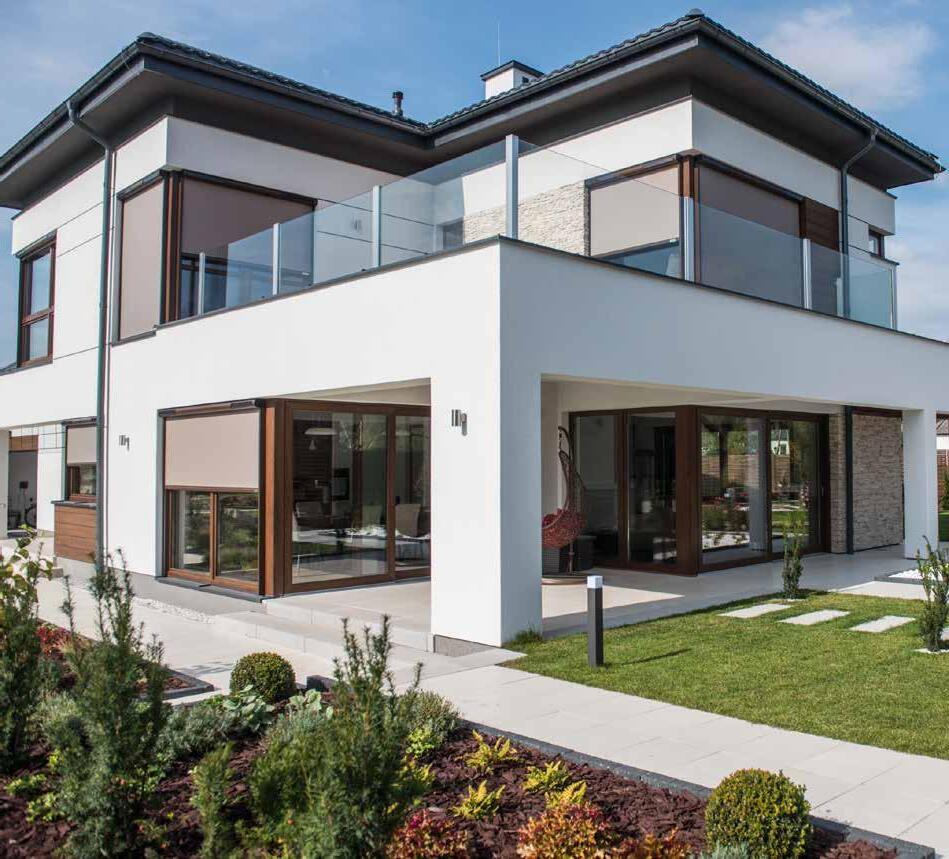
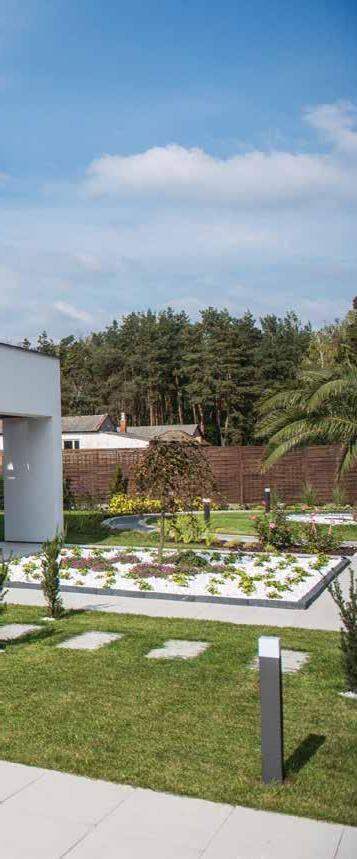
The VMZ, VMU, and VML awning blinds, along with VMB rollup awnings, are designed for vertical windows. Intended for external installation, they are suitable for PVC, aluminium, or timber windows and doors, including balconies and terraces. These awning blinds reduce heat absorption, provide even light distribution, and enhance indoor comfort.
In accordance with DIN 5034-1 standard, rooms should be protected from excessive heat of the sun not by means of internal accessories, but rather external shields (awning blinds, roller shutters).
“...constructional measures are necessary to prevent discomfort caused by the sun, such as excessive heating of the indoor air, especially during warm seasons, or the presence of glare [...] Suitable movable systems include external Venetian blinds, shutters or awnings.” - DIN 5034-1.
Solar radiation passes through the pane and is absorbed by an internal blind. It then radiates heat to the interior in the form of long wave infrared radiation, effectively acting as a radiator. Internal accessories should really be used primarily as a means of shading and interior decoration.


The awning blind is made of aluminium frame and weatherresistant material. Electrically operated awning blinds are driven by a motor, while their material moves along guide rails. Their fabric is tensioned by means of a spring system.

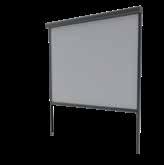
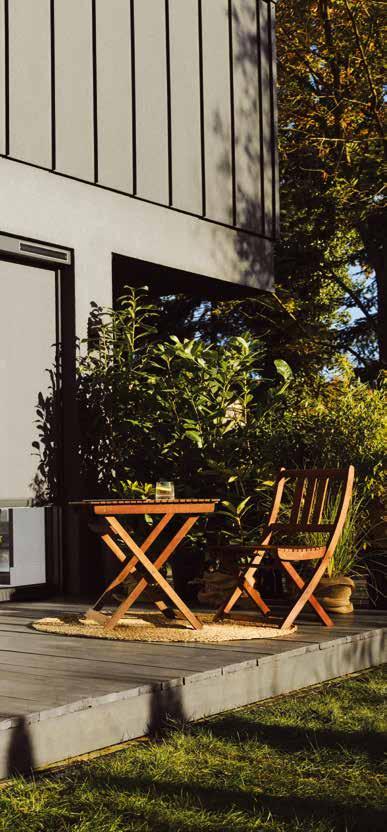
• control via smarphone app

• control via wall switch

• manual control by hand or via control rod (purchased separately)

• manual control

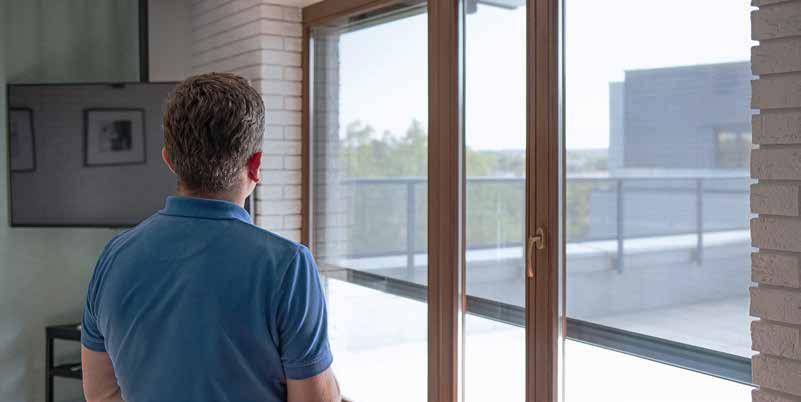
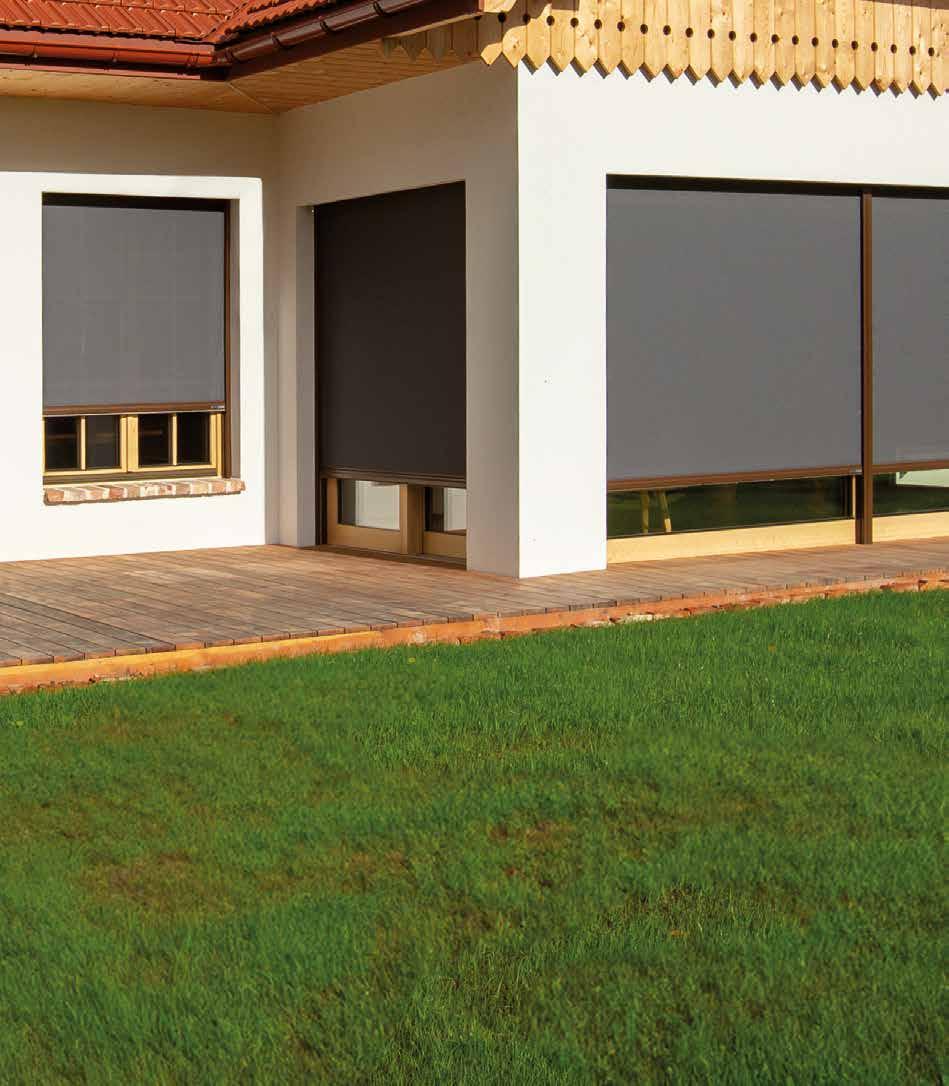
Flush-mounted VMU awning blinds are designed for vertical windows and are primarily intended for new buildings. Most of the structural elements can be concealed within the façade, providing a sleek, unobtrusive solution that does not affect the building’s appearance. When the fabric is rolled up, the blind is virtually invisible. The guide rails can be colour-matched to the windows, ensuring the aesthetics of the building remain uncompromised.


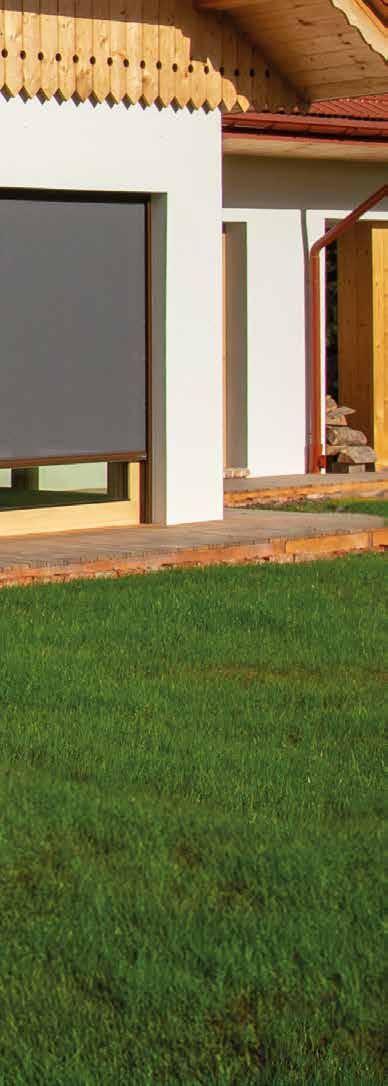
• remote control or wall switch

• control via smarphone app

• control via wall switch
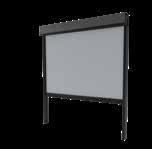

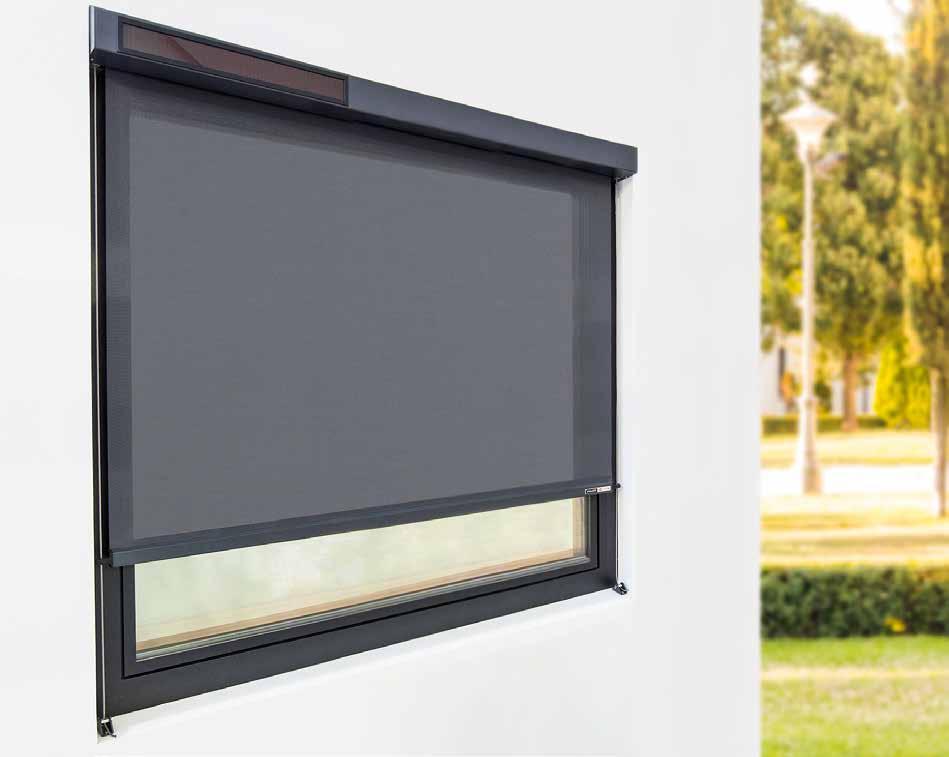
The VML awning blind comes with strings used to operate the fabric rolled up on the shaft. No standard side guide rails enhances aesthetics of the blind fitted onto the window while retaining its features that protect against overheating.
• automatic control


• remote control or wall switch

• control via smarphone app

• control via wall switch



The roll-up awning has a movable, tilting bar which allows access to be gained to the sill when the blind is in use.
• automatic control


• remote control or wall switch

• control via smarphone app

• control via wall switch

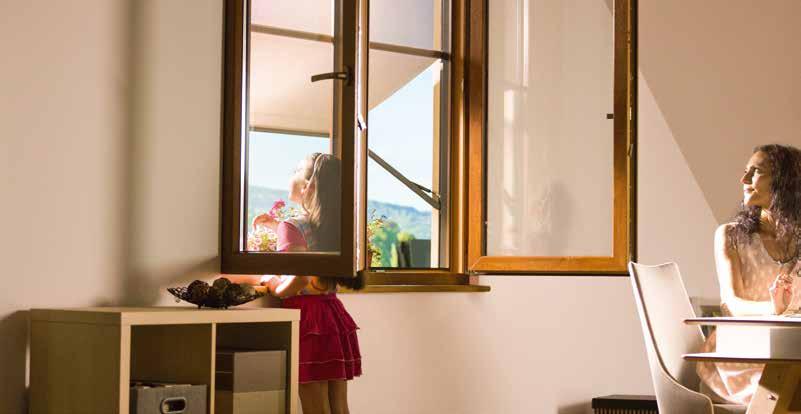
The Solar type blinds are powered by means of solar battery pack.
• Automatic control. An intelligent system operates the blind based on the level of sunlight. A photovoltaic panel acts as a sensor, triggering the blind to unroll automatically when solar radiation is high. On colder days, the Solar awning blind can be manually switched to winter mode. When sunlight levels are high, the blind rolls up to allow warm rays to enter, providing passive heating. In the evening, the blind can be lowered manually to protect the room from heat loss.
The Solar type awning blind and roll-up awning can be controlled in one of three modes:
• automatic (self-activating rolling up and unrolling dependent on the level of insolation),
• semi-automatic (self-activating unrolling, rolling-up via a remote control),
• operation via remote control
In special cases, the awning can be controlled by means of a service button
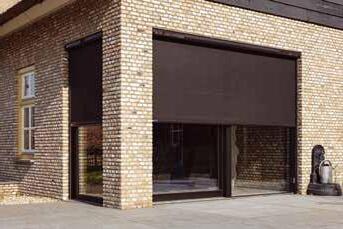



The Solar type awning blinds should be fitted in places with the solar panel positioned to direct sun exposure. It is recommended to install awnings on south, east and west facing roofs. Installation in the north side may result in battery discharge and the inability to operate the blind. To ensure correct operation of the automatic mode, the solar panel must be exposed to direct sunlight throughout the active operation mode.
1. When installing the VMZ Z-Wave Solar, VML Z-Wave Solar and VMB Z-Wave Solar blinds under balconies or canopies it is required to purchase an additional power panel.
2. The blind shaded by a balcony or eaves can be controlled automatically by another blind for vertical or roof windows which is exposed directly to the sun.
VMZ Z-Wave, VMU Z-Wave
VML Z-Wave, VMB Z-Wave
The Z-Wave type blinds are powered by 15V DC mains supply and operated by means of a remote control or wall switch in a wireless Z-Wave system.
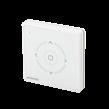
VMZ WiFi Tuya, VMU WiFi Tuya
VML WiFi Tuya, VMB WiFi Tuya
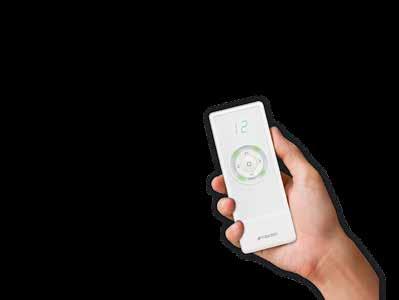
The WiFi Tuya type blinds are powered by 15V DC mains supply and operated by means of a smartphone using FAKRO Smart app in a wireless home WiFi network.

VMZ
The blind is controlled manually by hand or via control rod (purchased separately).
VMZ ZIP
The blind is controlled manually.

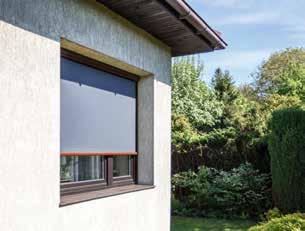
Profiles in awning blinds and roll-up awnings are available in four standard colours (white, grey, black and brown) or any RAL colour on request. The customer also has a choice of fabrics featuring different types of relative open area.
GROUP I

(fabric with 10% relative open area)
GROUP II

(fabric with 1% relative open area)
VMZ*
GROUP V
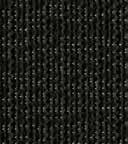


(fabric with 0% relative open area)





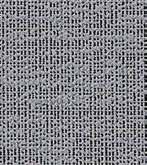
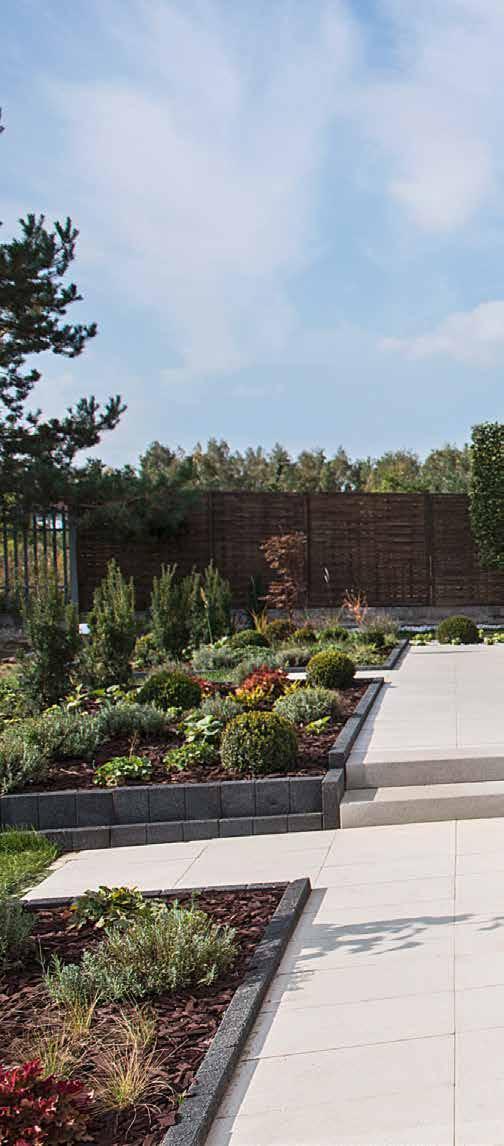




(fabric with 4% relative open area)


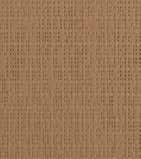



In blinds with 4% relative open area in which width exceeds 2600 mm and height exceeds 2500 mm (colours 701-709) and width exceeds 1700 mm and height exceeds 1600 mm (colours 710-716) the fabric consists of two parts connected in the middle (horizontal welded connection). For dimensions close to the maximum size of the awning (applying to colours 710-716), the fabric can consist of three parts.

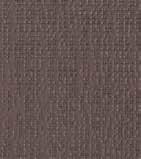
















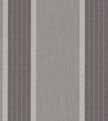









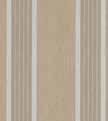
• The WiFi Tuya technology is based on radio wireless communication. It is characterized by resistance to interference, high throughput and the ability to connect devices to existing infrastructure networks based on standard WiFi Tuya.

• Operation of the system consists in the fact that a control device, eg smartphone sends a signal to the router which then distributes signals to individual devices. The failure of one device does not affect the operation of other devices, with all functional devices still available
• Option for connections with all devices directly and using the existing WiFi network (eg private homes, businesses).
• The WiFi system is easy to install, expand and manage. It can be used at any stage of the building’s operation. An additional benefit is the ability to obtain a remote access to devices via a router.
• Installation of the system does not require the use of any control panels or connecting cables between electrical devices, which clearly cuts down costs and installation time and ensures maximum comfort of operating the system.
• All devices in the WiFi Tuya system are operated via a smartphone with FAKRO app. It is also possible to control them by means of dedicated remote control or wall keypad.
• The TUYA system is easy to install, expand and manage. It can be used at any stage of the building’s operation as the WiFi Tuya system is also a whole range of Solar products equipped with a battery charged by a solar panel. TUYA is a leading company in smarthome solutions.

• Gateway for controlling Tuya WiFi products via the ZTP3 remote control and ZTK3 button. Required for controlling Tuya Solar devices.
• 3-channel remote control for controlling Tuya WiFi devices. Additionally, ZTG gateway is required.

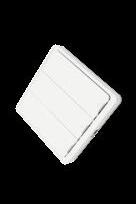
• 3-channel wall switch for controlling Tuya WiFi devices. Additionally, ZTG gateway is required.

• A system solution designed for inteligent buildings.
• The Z-Wave is a wireless radio protocol used for communication of home electrical appliances. All electrical devices that have the Z-Wave module can be connected to the network such as Z-Wave windows, standard windows fitted with actuators with the Z-Wave module, external ARZ Z-Wave roller shutters, AMZ Z-Wave awning blinds as well as internal accessories, including AJP Z-Wave, ARF Z-Wave and ARP Z-Wave.
• In addition, windows can be equipped with rain or window sensors and integrated with other home eletrical appliances.
• Installation of the system does not require the use of any communication cables between electrical devices, which clearly cuts down costs and installation time.
• The Z-Wave system is easy to install, expand and manage. It can be used at any stage of the building’s operation. It allows the user to create a wireless network and control products equipped with the Z-Wave module using a wireless keyborad, remote control, mobile phone or the Internet.
• FAKRO products equipped with the Z-Wave module work with Gateway Z-Wave device. An example is the Home Center 3 Fibaro gateway - smart home control panel operated via smartphone app.
To operate Z-Wave devices via Yubii app, the HC3 Lite gateway must be purchased.
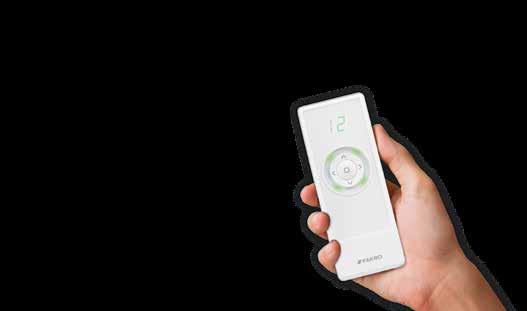

Z-WAVE CONTROL ELEMENTS
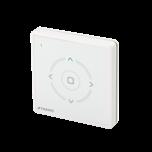
• Battery-powered Z-Wave radio wall controller. It can support up to 12 devices in 7 groups.
• Multi-channel Z-Wave radio remote control. It can support up to 12 devices in 7 groups.

• Also available in ZRH1 version.

• Z-Wave Gateway for controlling FAKRO Z-Wave devices via Yubii smartphone app.
ELECTRO 230V CONTROL ELEMENTS

• Single flush-mounted momentary position wall switch to control a single Electro 230 device. Also available as ZKN surface-mounted option.


• A single-channel Z-Wave controller placed in a flush-mounted box used for the control of a single Z-Wave device or one group of devices. Compatible with Sonata series by Ospel. Also available in 2-channel version as ZWL2 and three-channel option as ZWL3.

• ZTMR230 Tuya WiFi - remote control module for 230V AC blinds. The module is controlled via FAKRO Smart smartphone app, any TUYA WiFi controller and a wall switch.
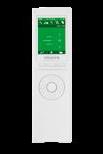
• Advanced Z-Wave radio remote control with a display. It allows to create 24 groups, 24 places and 24 scenes. Charging via microUSB port is possible.

• A single-channel Z-Wave controller placed in a flush-mounted box used for the control of a single Z-Wave device or one group of devices. Compatible with Sonata series by Ospel. Also available in 2-channel version as ZWL2 and three-channel option as ZWL3.

• Remote control module used to control Electro 230 devices. It is operated by means of any Z-Wave controller and a wall switch.

• Ventilated switching the 15V DC power supply to power Z-Wave devices. Output power 60W. To be installed on DIN TS35 rail. It provides power for one external accessory.

• Hermetic switching the 15V DC power supply to power Z-Wave devices. Output power 60W. It provides power for one external product.
